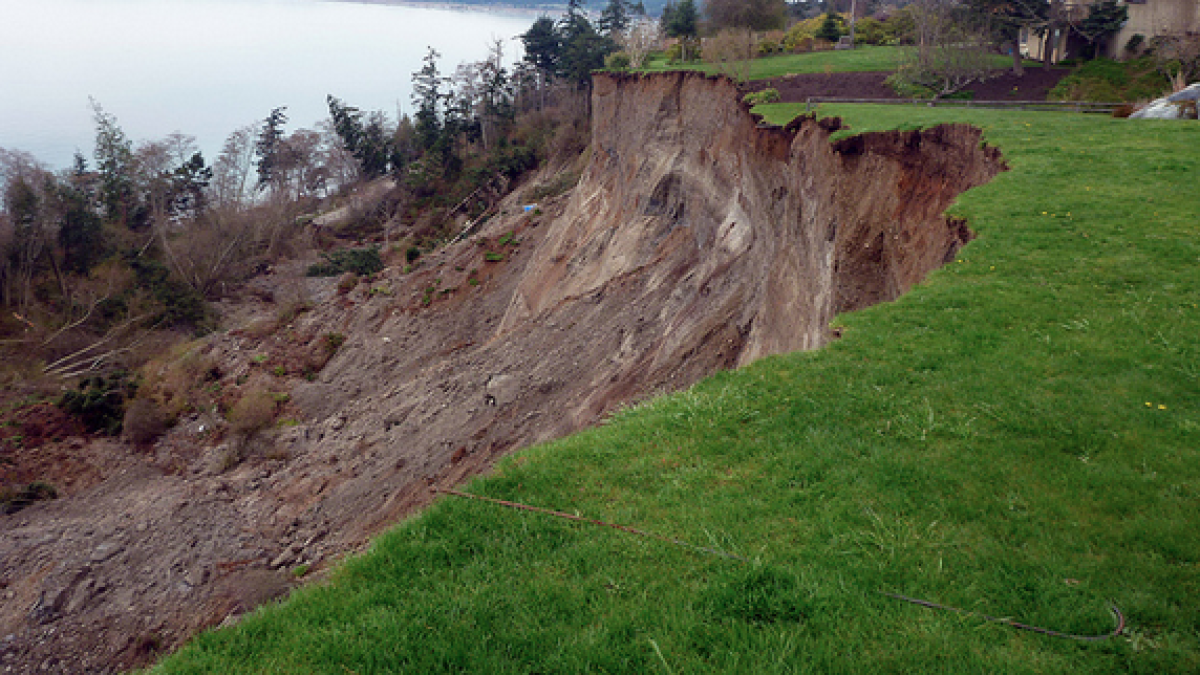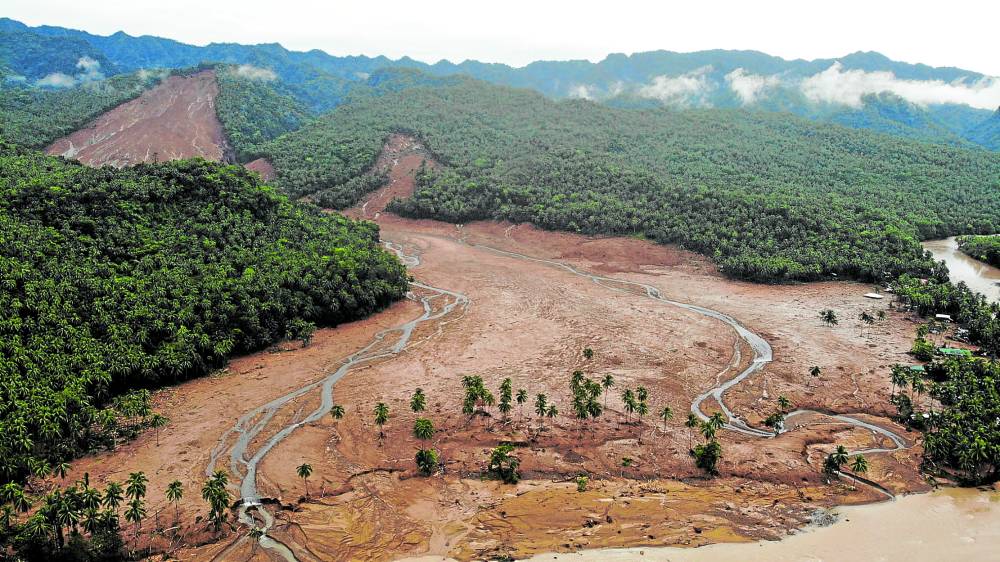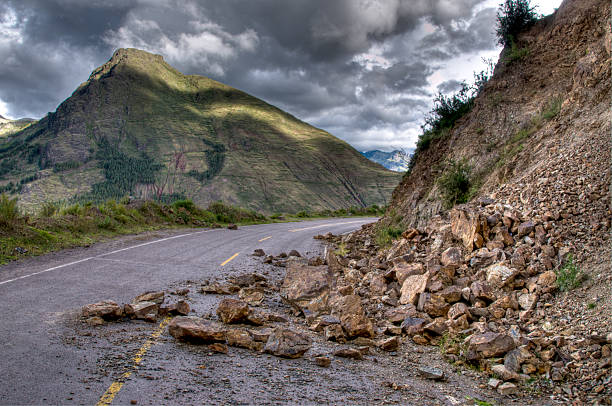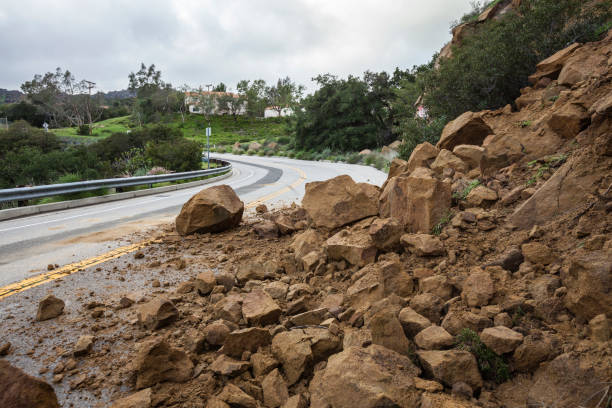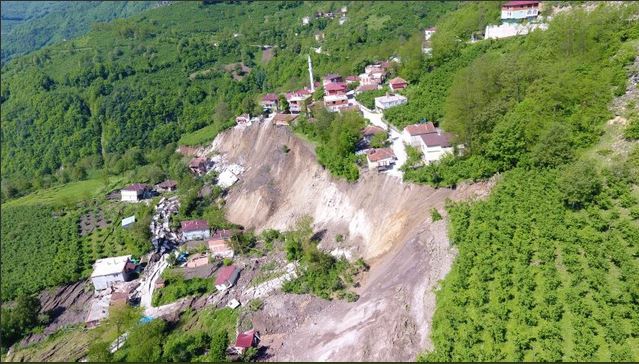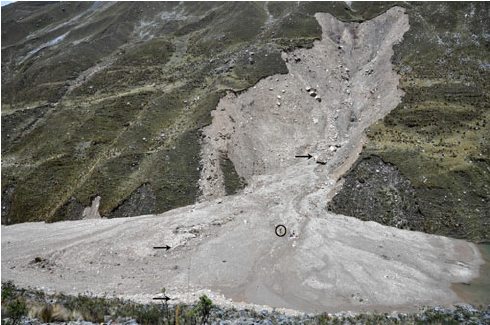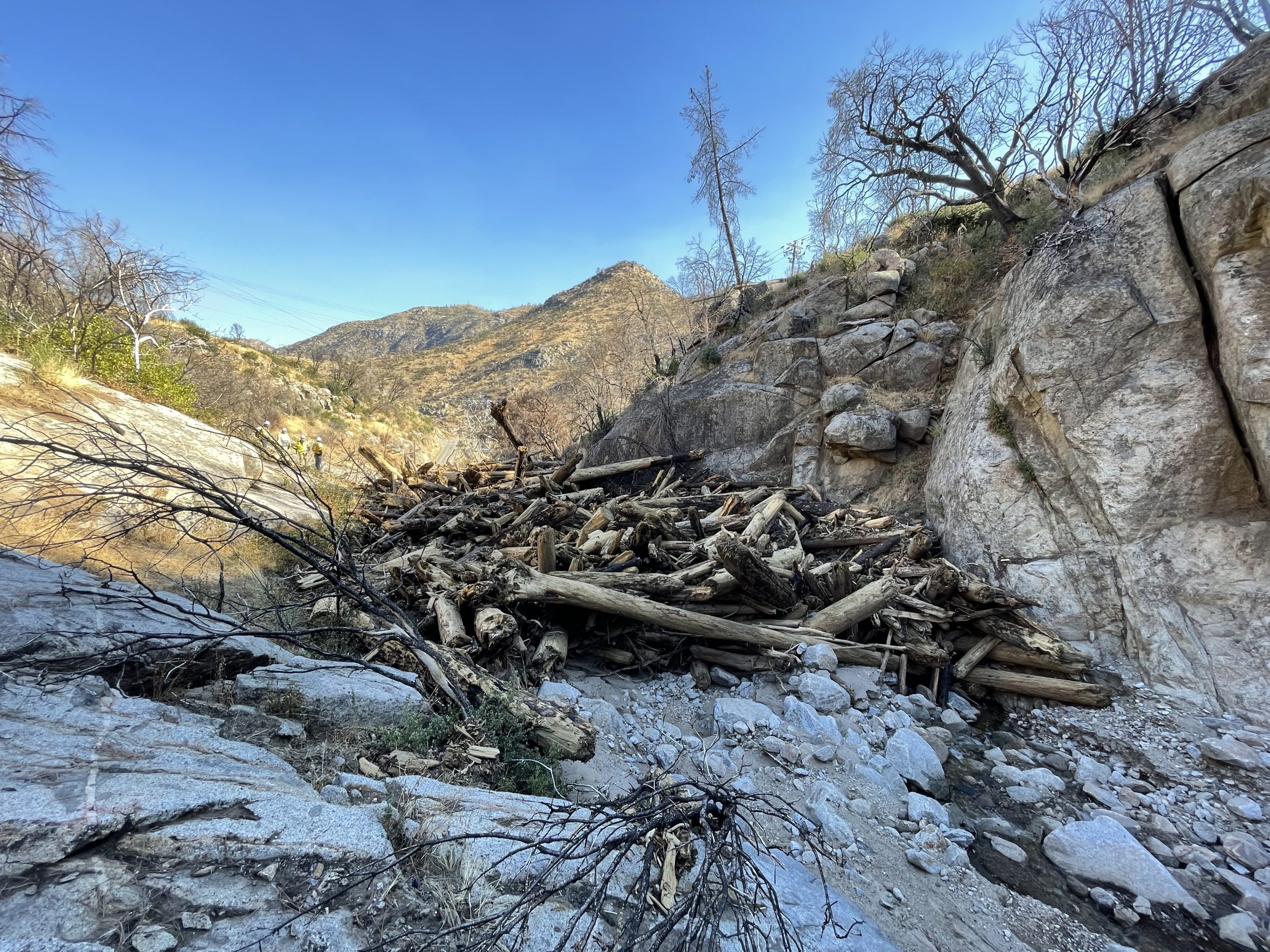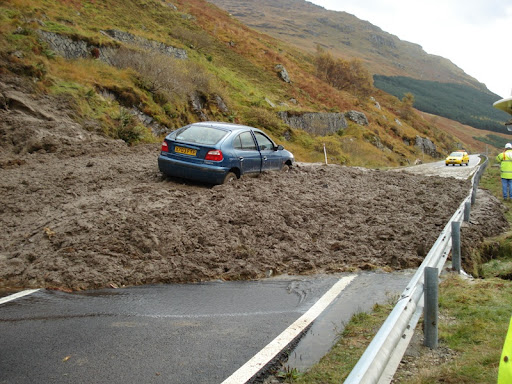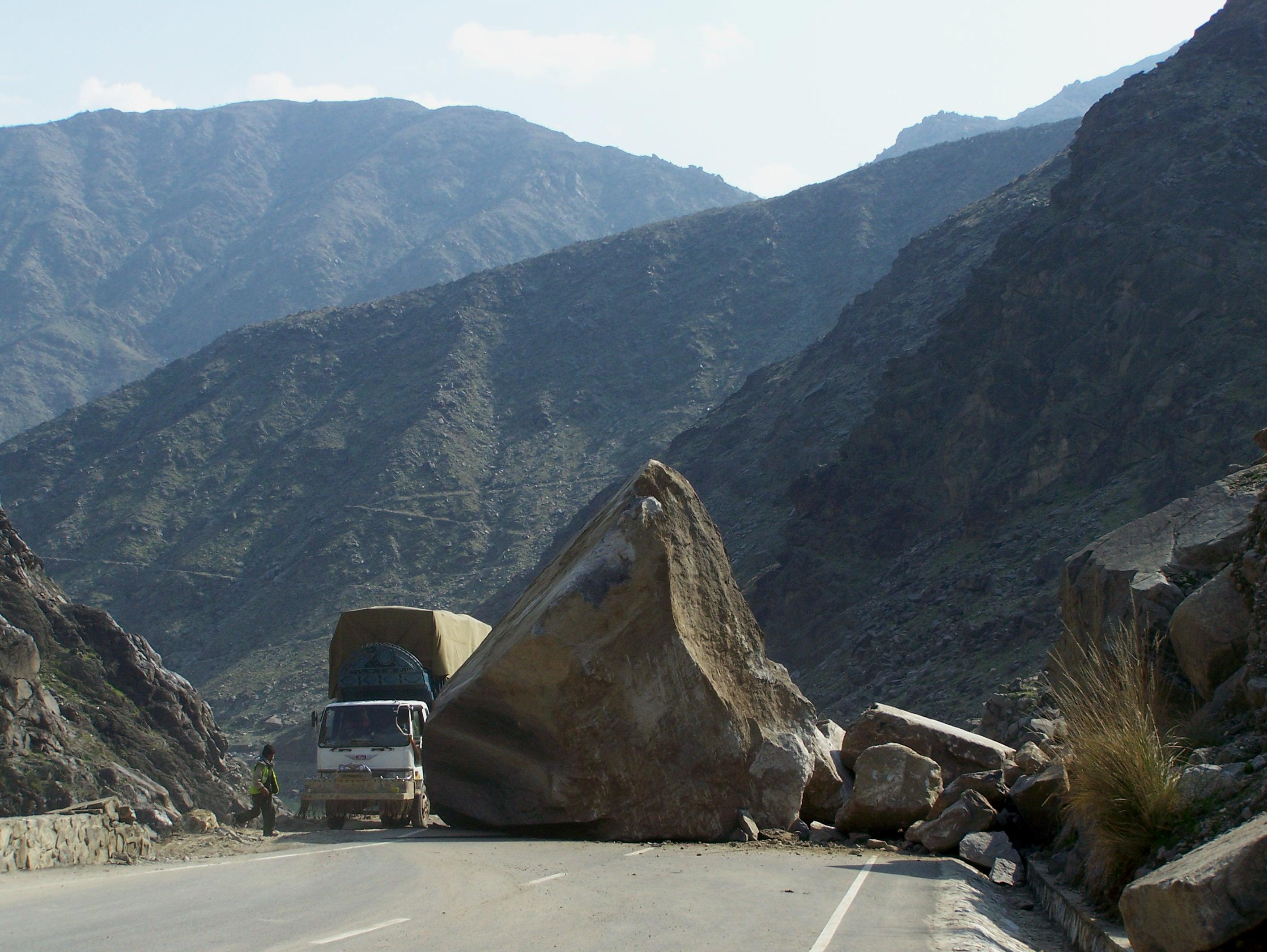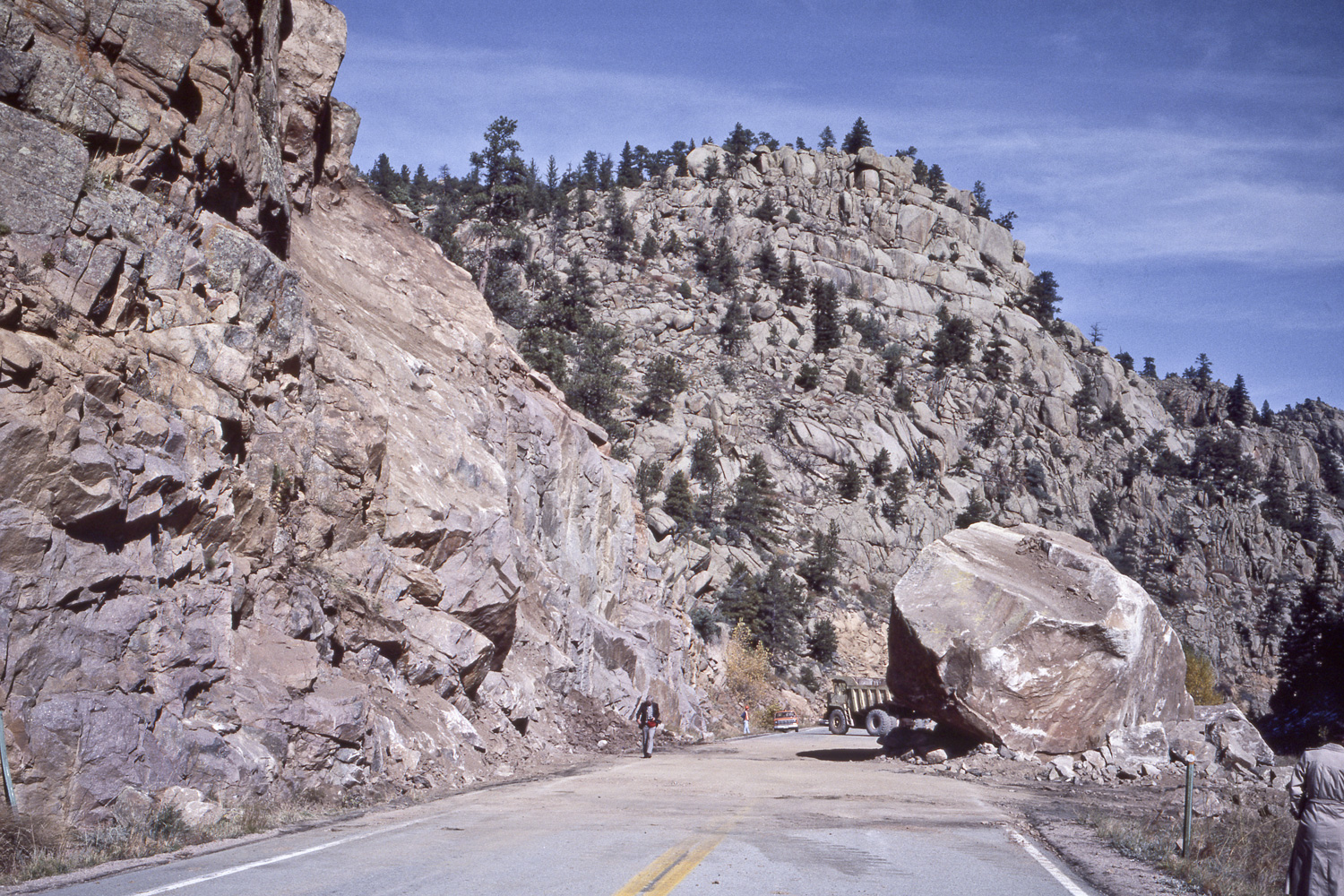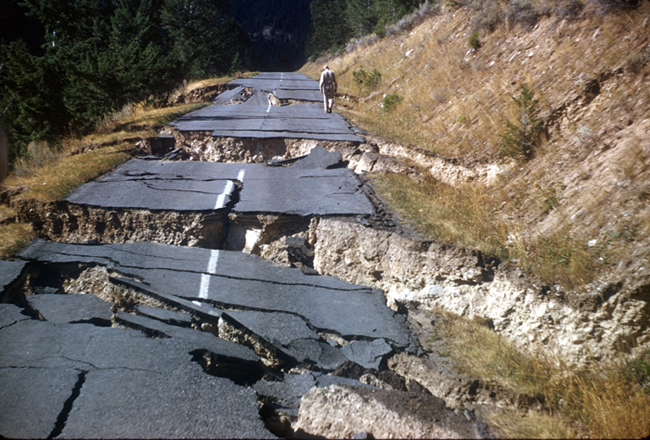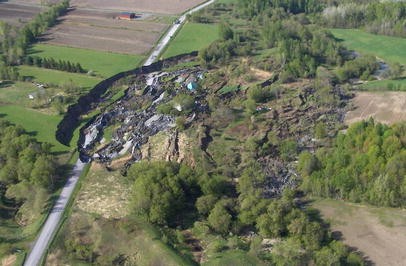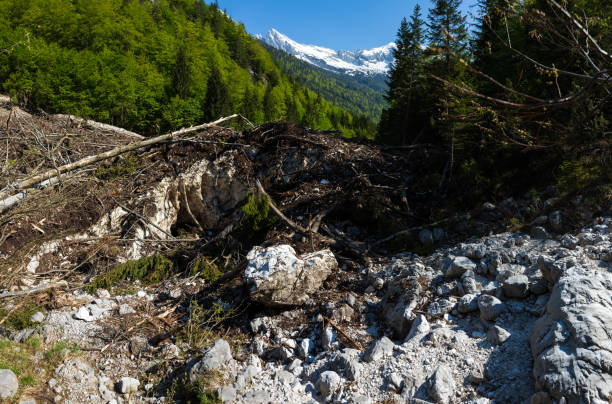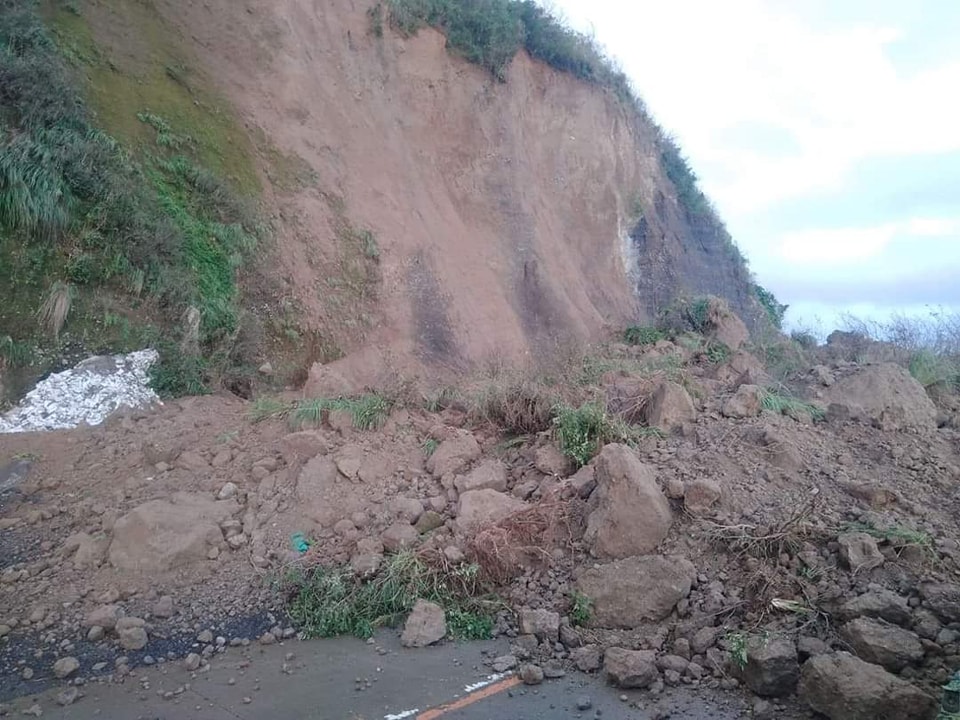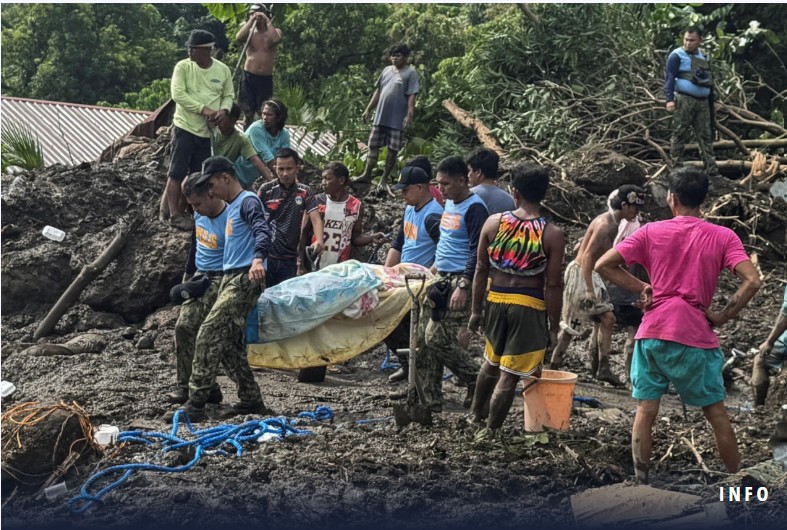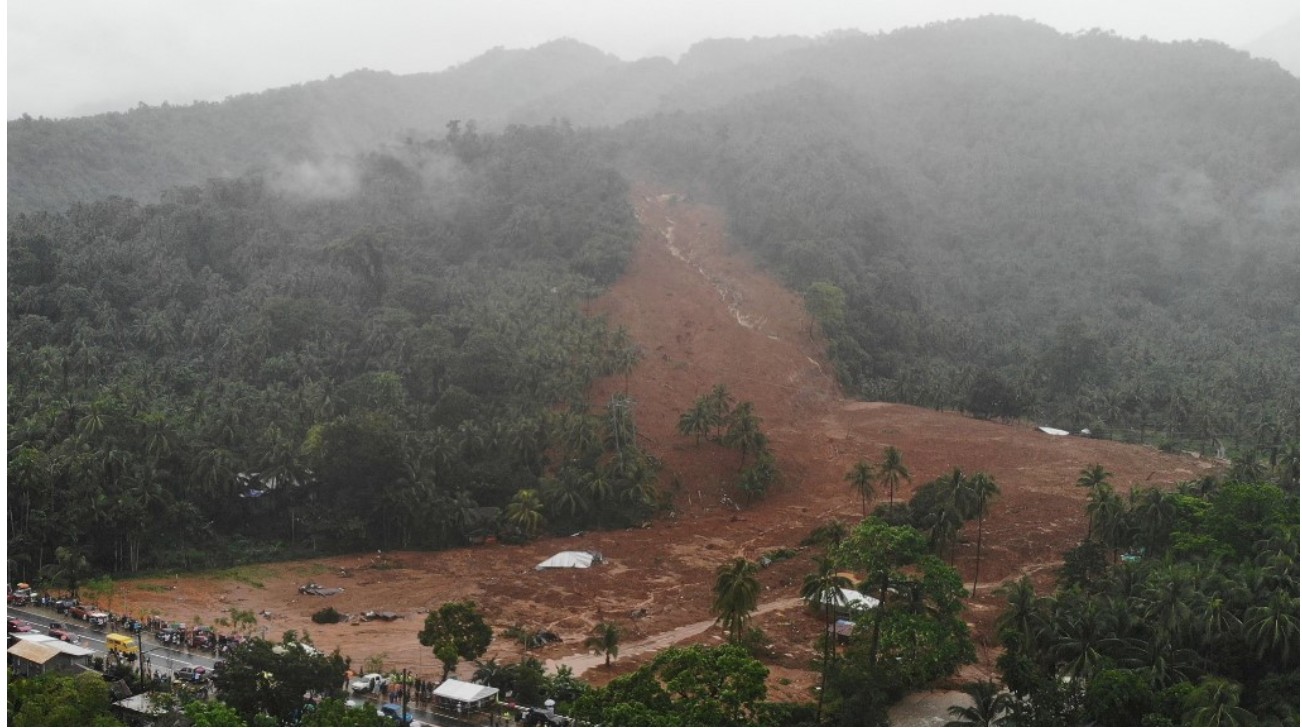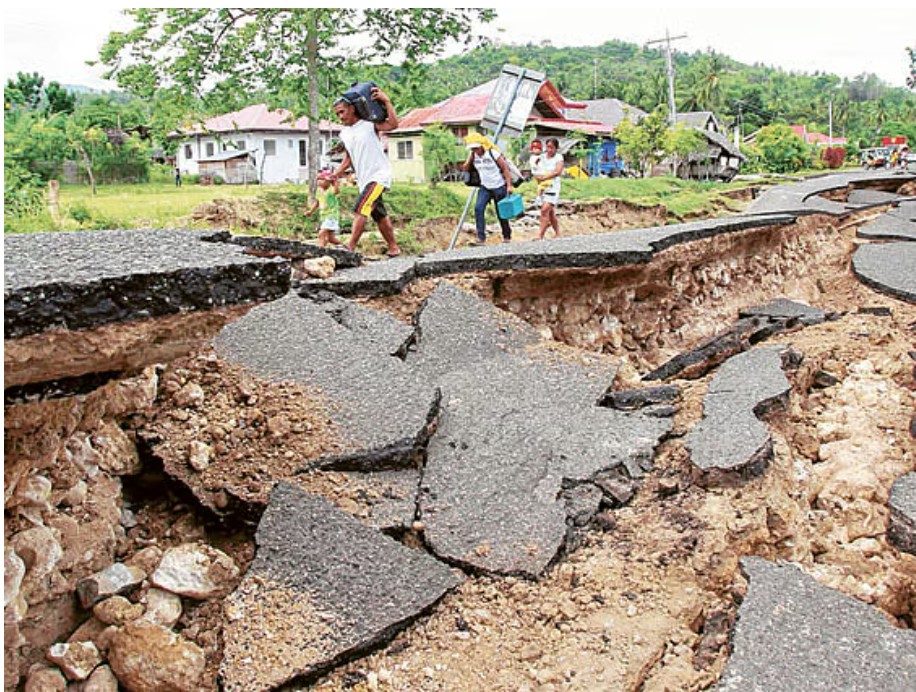LANDSLIDE
A landslide occurs when a large accumulation of rocks, debris, or soil moves downward on a slope.
More InformationCAUSES OF LANDSLIDES
This occurs due to heavy and continuous rainfall or as a result of an earthquake.
More InformationARE LANDSLIDES DANGEROUS?
Landslides are dangerous because they can pose a significant threat to human lives. Depending on the type of landslide—caused by heavy rainfall, earthquakes, or soil erosion—it can damage houses, roads, and other structures.
More InformationTYPES OF LANDSLIDES
Creep or slow ground movement
Slow and continuous movement of soil.
Rockslide
The sliding of rocks or soil along a surface such as a bedding plane, foliation surface, or joint surface.
Earth slump
The downward and outward movement of soil, rocks, and other materials along a concave surface.
Debris Flow
A mixture of water and debris flowing downhill.
Mudflow
A fast-moving flow of water, soil, rocks, and debris, usually occurring in rivers or other waterways.
Rockfall
The detachment and fall of rock fragments from a steep slope or cliff.
Soil Spread
The lateral spreading or extension of soil due to subsidence or internal deformation.
Debris Avalanche
The fastest type of landslide, involving rapid movement of rock, soil, and debris.
RELATED NEWS
PREPARING FOR LANDSLIDES
01 Consult experts in house construction to prevent property damage.
It’s important to continuously monitor the news to avoid being caught off guard by bad weather. Ensure that your house or structure is designed to withstand landslides, has a strong foundation, and has alternative evacuation routes.
02 Determine if your area is at risk of landslides.
Areas with weak soil, especially on slopes, are prone to landslides. Observe and report to authorities if there are cracks or other signs of dangerous ground movement.
03 Plant trees on slopes or build retaining walls to prevent soil erosion.
Plants, especially trees, help hold the soil in place to prevent landslides. Houses should have a proper drainage system to prevent water from accumulating and weakening the soil.
04 Stay updated with weather reports and be alert for warnings.
Check with authorities if your area has an early warning system or alarm for landslides to prepare in advance.
05 Construct drainage channels to divert mudflows and ensure they do not cause harm to other properties.
Properly designed drainage systems prevent soil weakening and landslides. Build barriers or retaining walls in erosion-prone areas, especially on slopes. Ensure that water does not accumulate in one area, as it can trigger landslides.
06 Prepare an emergency survival kit for your family.
Have an emergency kit containing a battery-operated radio, flashlight, batteries, medicine, water, food, and important documents.
07 If authorities issue an evacuation order, leave immediately.
Landslides can cause damage to homes and lives. If there is a warning or signs of a landslide, go to a safe area such as a higher ground or a designated evacuation area.
08 If driving, avoid roads affected by landslides.
Bridges or roads affected by landslides may lead to accidents. Find alternative routes and avoid areas with ground cracks or fallen trees.
09 If outside, avoid landslide-prone areas and seek a safe location.
Do not stay in areas with the possibility of further landslides. Look for sturdy structures or places that are not affected by the landslide.
10 Stay calm and warn others.
Panic can cause more danger. Provide information to those around you and assist those in need, especially children, the elderly, or people with disabilities.
11 Do not hesitate to leave your home if you hear loud noises or see ground cracks.
Loud noises or sudden ground shifts are signs of an imminent landslide. Evacuate immediately, especially if your home is near a slope or the ground around it has already weakened.
12 If trapped inside a house, take cover under a sturdy object.
If you cannot escape immediately, take cover under a table or bed to protect yourself from falling debris. Think of ways to signal rescuers using sound or light.
